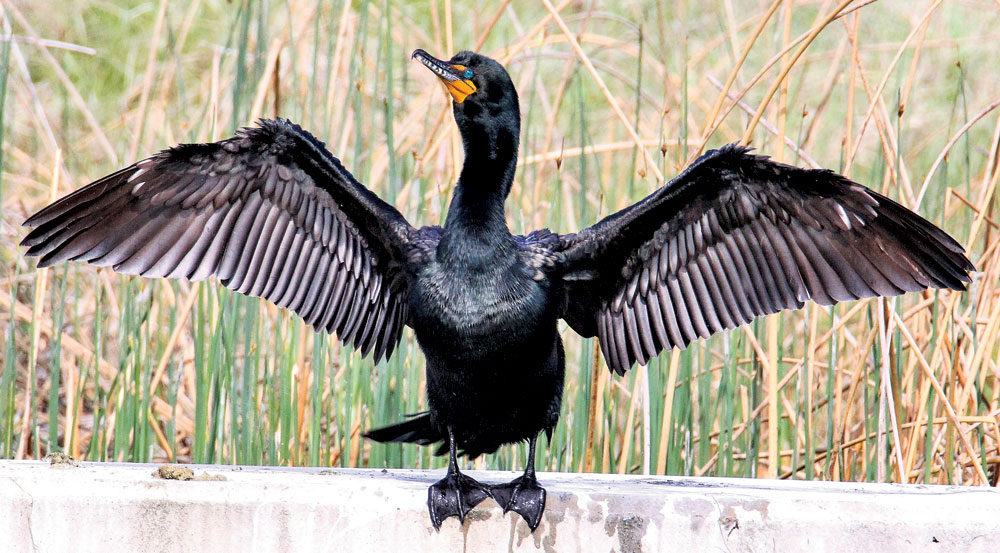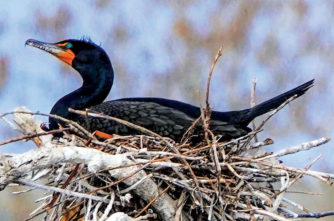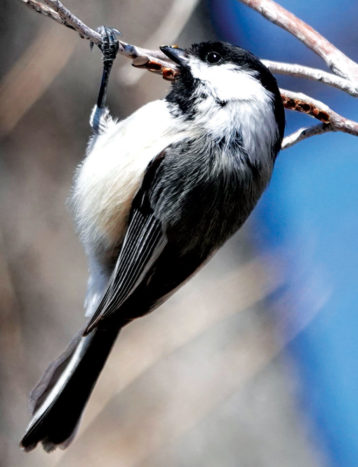
The Double-crested Cormorant’s weight is 2.6–5.5 pounds; its wingspan is 45–48 inches; and its length is 28–35 inches.
Double-crested Cormorant

The Double-crested Cormorant sitting in its nest.
The Double-crested Cormorant is a large waterbird with a stocky body, long neck, medium-sized tail, webbed feet, and a medium-sized hooked bill. The eyes are aquamarine blue.
Double-crested Cormorants are not as waterproof as ducks and they tend to swim low in the water. A common posture is to have their wings spread wide and held open to dry. They are experts in diving and catching fish.
Cormorants build colonial nests—meaning a nest surrounded by nests of similar birds—in the center of the tree-tops and expand outward. However, the tree typically dies and collapses after a few years of being killed by the acidic guano build-up from their droppings.
Black-capped Chickadee

The Black-capped Chickadee’s weight is 0.32–0.49 ounces; its wingspan is 6.3–8.3 inches, and its length is 4.7–5.9 inches. The birds hop along tree branches searching for food, sometimes hanging upside down or hovering.
The Black-capped Chickadee is a small songbird. It has a black cap and “bib” with white sides on the face. Its underparts are white with some rusty brown on the flanks. Its back is gray and the tail is normally slate gray. It has a short dark beak and a long tail. Its common call is the “chickadee-dee-dee” that is often heard before the bird is seen.
Insects, especially caterpillars, form a large part of their diet in the summer. They may catch insects in the air. Seeds and berries become more important in the winter, as are spiders and other foods such as suet, fat, and meat protein from frozen carcasses.
Bird Walks
February 4 and March 4. Two options: 8–10:30am or 8:30–10:30am (choose a 2-hour or a 2.5-hour walk.) Both walks are free but you must RSVP at www.blufflake.org/birdwatching. All are welcome. Bring your own binoculars, or borrow a pair from your guide. 11255 MLK Blvd. Search FrontPorchNE.com for “Bird Sightings” to see all the past bird stories and photos from George Ho.
